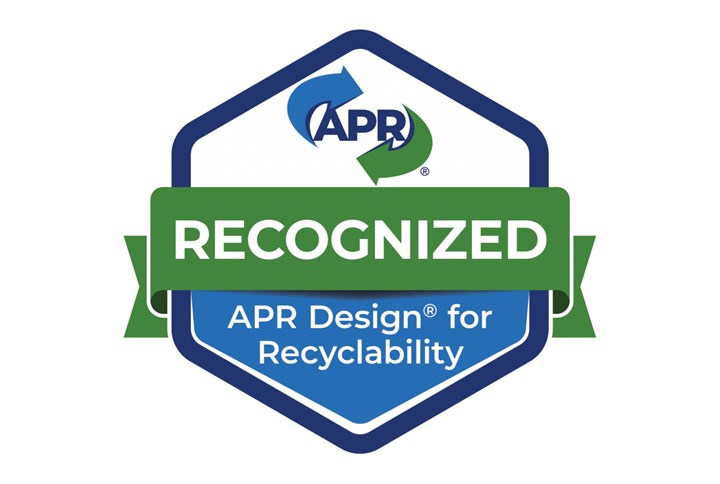APR Expands Design Guide for Plastics Recyclability With Polypropylene Categories
Six new packaging categories will be eligible for third-party validation of compatibility with North American recycling programs.
The Association of Plastics Recyclers (APR) announced the expansion of its plastics recyclability recognition program. Six new polypropylene packaging components will now be eligible for the Preferred Design Recognition Program, formerly known as Meets Preferred Guidance.
This program provides third-party validation that products are compatible with the North American recycling system and have achieved Preferred status according to the APR Design Guide for Plastics Recyclability.
The newly eligible packaging components include:
- PP Base Resins
- Direct Print for PP Packaging
- Closures, Fitments and Liners for PP Containers
- Complete and Unprinted Label Constructions for PP Packaging
- PP Containers/Bottles/Rigid Packages
- PP Packaging Constructions
Further expansion of the program to include PET and Colored HDPE containers and packaging constructions, as well as categories for Natural HDPE packaging and PE films, are expected in the near future. A complete list of current and upcoming recognition categories are available on the APR Design for Recyclability Recognition Program page of the APR website.

APR recognizes packaging design that meets guidelines for improving recyclability. Photo Credit: Association for Plastics Recyclers (APR).
“Since its inception over 20 years ago, APR Design Recognition has reviewed and recognized packaging from more than 120 companies, leading to the mainstream adoption of impactful innovations that improve the recyclability of plastic packaging and reduce plastic waste,” says Ruben Nance, director of the Preferred Design Recognition Program at APR. “The expansion of APR's Preferred Design Recognition program will save time, effort and resources needed for brands and retailers to easily identify recyclable packaging solutions.”
There are three paths to APR Design Recognition, depending on the item being submitted: Preferred Design, Critical Guidance and Responsible Innovation. All lead to the same level of recognition, signifying that the product has met the highest criteria for recyclability according to the APR Design Guide.
For component and packaging manufacturers, the program rewards the investment required to solve recycling challenges and replace problematic items. For brands and retailers, the program provides confidence and reduces risk when making claims and complying with voluntary or legislative sustainable packaging requirements. The program also helps increase the supply of high-quality postconsumer recycled content (PCR.)
Related Content
-
Medical Tubing: Use Simulation to Troubleshoot, Optimize Processing & Dies
Extrusion simulations can be useful in anticipating issues and running “what-if” scenarios to size extruders and design dies for extrusion projects. It should be used at early stages of any project to avoid trial and error and remaking tooling.
-
Multilayer Solutions to Challenges in Blow Molding with PCR
For extrusion blow molders, challenges of price and availability of postconsumer recycled resins can be addressed with a variety of multilayer technologies, which also offer solutions to issues with color, processability, mechanical properties and chemical migration in PCR materials.
-
US Merchants Makes its Mark in Injection Molding
In less than a decade in injection molding, US Merchants has acquired hundreds of machines spread across facilities in California, Texas, Virginia and Arizona, with even more growth coming.








